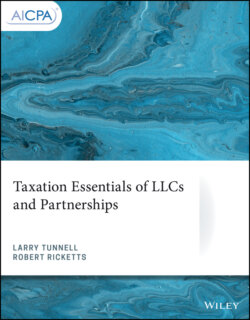Читать книгу Taxation Essentials of LLCs and Partnerships - Larry Tunnell - Страница 20
Example 1-8
ОглавлениеLynn owns a large tract of ranch land that she would like to develop into a dude ranch. Unfortunately, she does not have sufficient cash resources to develop the property herself, and she cannot obtain bank financing with favorable terms. She decides to approach the owner of a dude ranch in another state whom she met while on vacation last year. The other ranch owner is interested but is a little wary about investing in an area with which he is unfamiliar. Lynn, however, is confident that a dude ranch on her property would be successful. She is so confident that the venture will succeed that she offers to bear 75% of the risk of loss, while taking only 50% of the profits from the venture, if the other partner will invest the $250,000 needed for improvements to make the dude ranch operable. Assume the other partner makes the necessary investment, and that the dude ranch loses ($50,000) in its first year of operations. Lynn will be allocated 75% of this loss, or ($37,500). Her partner will bear only ($12,500) of the loss. If the dude ranch turns around in its second year, and generates taxable income of $40,000, Lynn's share of the second-year profit will be $20,000 (50%). Therefore, although the partnership's net profit or loss for the two-year period is ($10,000), Lynn has been allocated a loss of ($17,500) [$37,500 - $20,000], whereas her partner has been allocated profits of $7,500 [$20,000 second-year profit less ($12,500) first- year loss]. Lynn is indeed assuming a much larger portion of the risk of loss from their joint activities than is her partner. This disparity may, however, be worthwhile if Lynn is right and the dude ranch develops into a profitable enterprise.
Finally, note that it is possible in a partnership or an LLC to share differently in profits and losses from one year to the next. For example, it is not unusual for a partner to receive a disproportionate share of partnership profits until he or she receives a pre-determined amount, and for profits to be shared equally after that point. To illustrate, in the preceding example, the partners might write the partnership agreement to provide that Lynn's partner will receive 60% of profits until he has recouped his $250,000 investment in the venture, with profits realized after that point being shared equally. Again, this type of flexibility is extremely difficult to achieve in any other form of organization.
